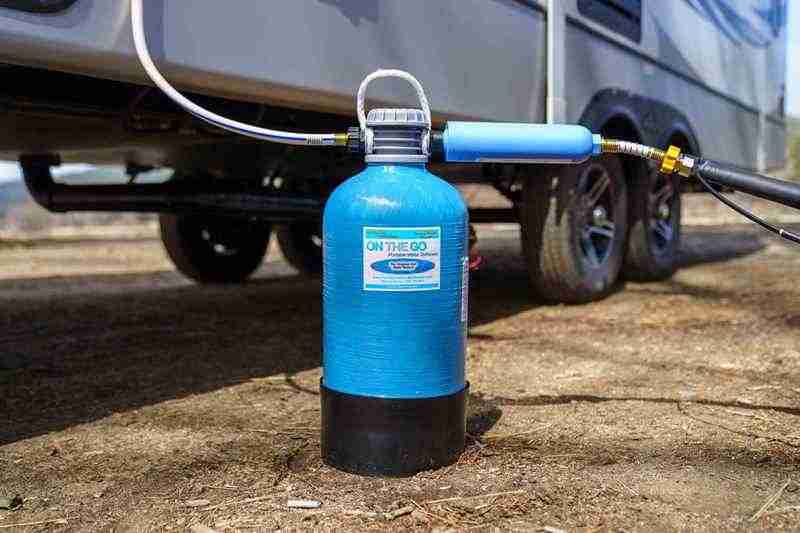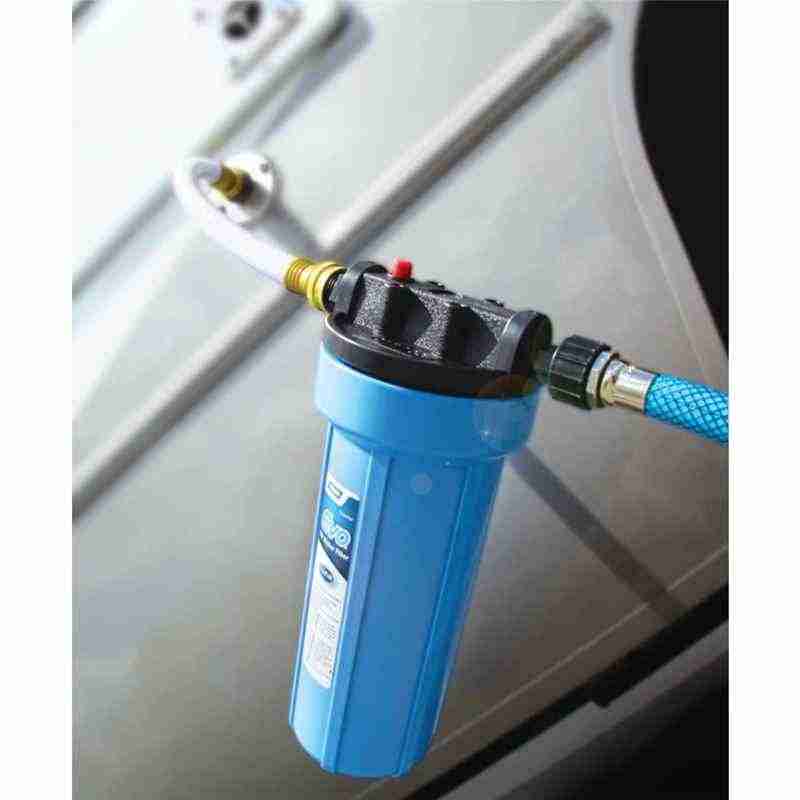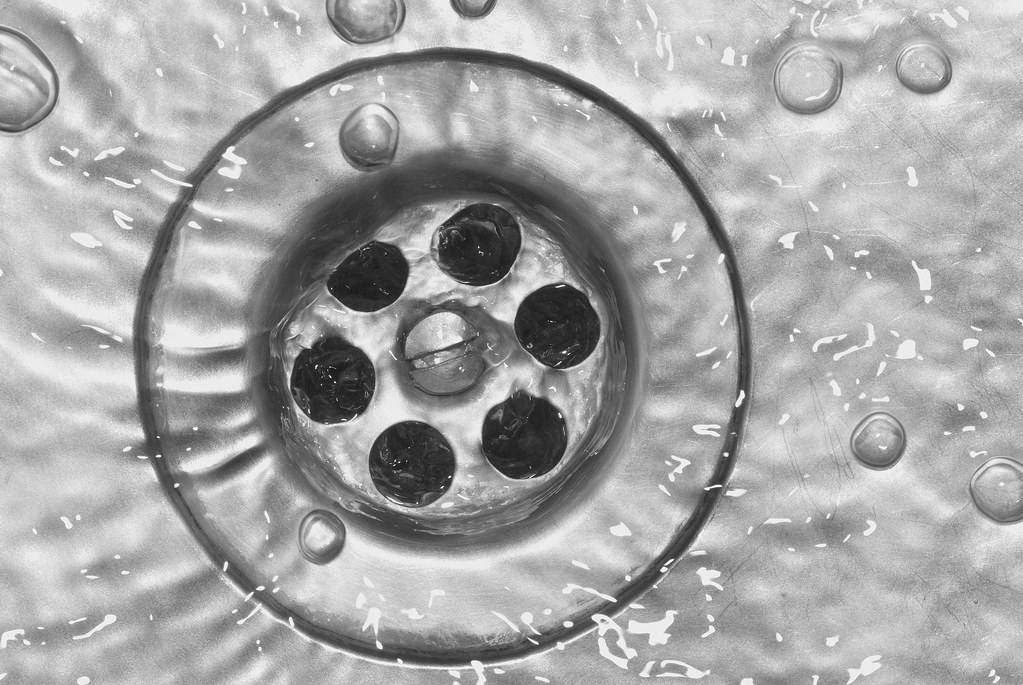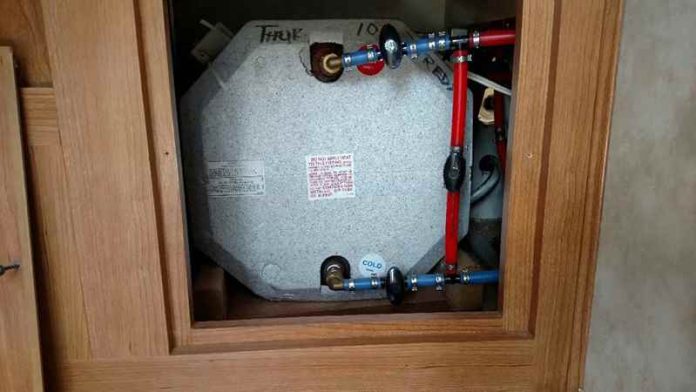RV Hot Water Tank Systems
Have you ever wondered how RV enthusiasts manage to enjoy the comfort of hot showers and the convenience of warm water no matter where they are? The answer lies in the hot water tank systems that come equipped in RVs. These systems ensure that whether you’re parked beside a serene lake or camped out in the wilderness, you can still have access to one of the essential comforts of home – hot water.
Overview of hot water tank systems in RVs
A standard RV hot water system typically includes a tank, heating elements (which can be powered by electricity, propane, or both), and a thermostat to regulate temperature. Similar to residential units, these systems provide a ready supply of heated water for cooking, cleaning, and bathing. However, their designs are optimized to meet the unique challenges of mobile living, such as limited space and the need for energy efficiency.
A hot water heater is an essential appliance for ensuring a steady supply of hot water in our homes. It works by heating up water from the fresh water tank, which is typically connected to the main water supply. This allows us to have access to fresh, clean water at all times, whether it’s for cooking, cleaning, or taking a shower. However, it’s important to regularly maintain both the hot water heater and the fresh hot water tank to ensure they are working efficiently and providing us with the best quality water possible. By properly caring for these crucial components, we can continue to enjoy the convenience of having hot, fresh water in our daily lives.

Importance of properly filling and maintaining the hot water tank
Ensuring your RV’s hot water tank is properly filled and maintained isn’t just about comfort; it’s also about safety and longevity of the equipment. An inadequately filled tank can cause the heating element to overheat, leading to damage and potential failure. Regular maintenance, such as checking for leaks, flushing out sediment, and inspecting the anode rod, can prevent malfunctions that might otherwise interrupt your adventure.It is essential to regularly fill the hot water tank in order to ensure a steady supply of hot water in your home.
This can be done by checking the water level and using a water pump to refill the hot water tank if necessary. Neglecting to fill the hot water tank can result in cold showers and inconvenience for you and your family. Additionally, it is important to also regularly check and maintain the heater tank to avoid any malfunctions and ensure efficient heating of the water. By properly maintaining and filling these hot water tanks, you can enjoy a constant supply of hot water and avoid any unexpected issues.

When it comes to maintaining a steady supply of hot water in your home, having a reliable water pump is essential. But it’s not just the pump that plays a crucial role in keeping your water warm – the hot water heater tank and hot water faucet also play vital roles in this process. The water pump is responsible for circulating the hot water from the heater tank to the faucets in your home, ensuring that you always have access to hot water when you need it. And of course, the hot water heater tank stores and heats up the water, making it readily available for use.
Finally, the hot water faucet allows you to control the flow and temperature of the hot water, ensuring that you can enjoy a comfortable and relaxing shower or bath.
Brief mention of common challenges and misconceptions related to RV hot water tank systems
Operating an RV water system comes with its own set of challenges, from limited water capacity to varying water pressure at different campsites. There are also misconceptions, such as the belief that RV hot water tanks require no upkeep or that any issues with the water supply are difficult to troubleshoot. In reality, with a little knowledge and some routine checks, most owners can keep their systems running smoothly.

Understanding Your RV’s Hot Water Tank
Peering into the heart of your RV’s comfort features, the water tank stands out as a true hero of homey conveniences. But what exactly goes into this unsung appliance that ensures you have warm water at your fingertips while traversing the great outdoors?
Components and Functioning
At its core, an RV hot water tank is quite straightforward. It typically consists of a water tank, a heating element, and a thermostat. The water tank stores cold water, which is then heated by the element – powered generally by gas, electricity, or both. The thermostat regulates the temperature, maintaining it at your setting of choice to avoid scalding or lukewarm surprises. Think of it as a miniature version of your hot water tank system at home, but designed for the mobility and constraints of RV life.
Different Types of RV Hot Water Tank Systems
When it comes to choosing a water system for your RV, there are three main contenders: tankless, tank-based, and hybrid. Tankless systems heat water on demand, providing a never-ending stream of water, making them ideal for large families or those with higher water usage. Tank-based systems, on the other hand, store a specific amount of hot water and can run out if you’re not careful. Lastly, hybrid systems combine aspects of both, offering efficiency and storage to meet varied needs.
Each type has its pros and cons, and your choice will hinge on factors like how much space you have, your budget, and your water needs. For instance, tankless systems save space and provide continuous water but can be more expensive and require more power. Tank-based systems are often simpler and cheaper but come with the limitation of finite water supply.
Capacity and Efficiency Considerations
How do you decide on the right capacity for your water needs? Start by considering your travel habits and usage patterns. If you’re a solo traveler who loves a quick shower and rarely cooks, a small tank may suffice. However, if you’re part of a family that enjoys lengthy showers and cooking in the RV, you’ll want a larger capacity to prevent the dreaded cold-water finale.
Efficiency is another critical factor. An efficient system means less energy consumption, which is not only good for the environment but also for your wallet. Look for models with good insulation and quick recovery rates, especially if you have a hot water tank-based system. With tankless systems, focus on the energy rating and flow rate to ensure you get the best performance.

Your choice will also affect your travel experience. For example, a high-capacity tank might mean fewer stops to refill, but it will also add weight to your RV, affecting fuel efficiency. On the flip side, a smaller, more efficient tank might require more frequent fills but could save you money on gas in the long run.
In sum, understanding your RV’s hot water tank isn’t just about technical specs; it’s about aligning your system with your lifestyle on the road. By weighing the type, capacity, and efficiency against your habits, you can ensure that a hot shower is always ready after a day of adventure.
Reasons for Properly Filling Your RV’s Hot Water Tank
Imagine waking up on a chilly morning in your RV, craving a comforting hot shower only to be greeted by an icy stream of water. This scenario underscores the importance of having a consistent supply of water while traveling. Ensuring your RV’s hot water tank is properly filled means you can reliably access water for showers, washing dishes, and more, contributing significantly to a pleasant and homely experience on the road.
Moreover, the convenience of immediate water cannot be overstated. A well-maintained water system directly impacts the overall comfort and convenience of your RV lifestyle. The ease of turning a tap for water feels like a given until you’re faced with the alternative: boiling pots of water or enduring cold washes. Regular checks and maintenance lead to efficient water heating, saving you time and energy, which is especially precious when adventuring off the grid.
However, neglecting your water tank can lead to a slew of potential issues and inconveniences. An improperly filled tank might not only provide inconsistent water but could also sustain damage. Without the correct water level, heating elements may overheat and burn out, leading to costly repairs. In extreme cases, a malfunctioning pressure relief valve due to poor maintenance could even pose a safety risk.
To avoid such discomforts and hazards, it’s crucial to understand the proper techniques for filling and maintaining your RV’s hot water tank. This will not only enhance your travel experience but also extend the lifespan of your RV’s water system, ensuring many more comfortable journeys to come.
- Ensuring Comfort with Consistent Water for your Hot Water Tank
- Water on demand can make all the difference between a trip that feels like a series of compromises and one that maintains the comforts of home. By properly filling your RV’s water tank, you eliminate the worry of running out of water in the middle of a shower or while cleaning up after dinner.
- Impacts of a Well-Maintained Water System
- Routine maintenance of your water system isn’t just about comfort; it’s also about efficiency. An RV that’s running smoothly, with all systems operating as they should, allows for a seamless living experience. This includes less energy consumption for heating water, which can save you money and reduce your environmental footprint.
- Avoiding the Downside of Neglect
- Ignoring the needs of your water tank might seem harmless at first, but the consequences can quickly become serious. Inadequate water levels can cause overheating and damage to the system, while sediment buildup from lack of flushing the tank can reduce efficiency and lead to premature failure. Recognizing these risks emphasizes the importance of proper filling and ongoing maintenance for your hot water tank.
In the end, taking care of your RV’s water tank is akin to caring for a vital organ of your mobile abode. With each destination, your comfort remains paramount, and ensuring you have water is a key piece of that comfort puzzle. So, cherish your water system, and it will serve you well on countless adventures.
Best Practices for Filling and Maintaining Your RV’s Hot Water Tank
Embarking on an RV journey without a reliable water supply is like setting sail without a compass. Ensuring your aquatic adventures are as comfortable as they can be begins with something seemingly simple: filling and maintaining your RV’s hot water tank. This essential task, when done correctly, promises cozy mornings and soothing evenings regardless of where you park.
Step-by-Step Guide for Filling the Water Tank
Let’s dive into the process of filling your tank. To start, ensure all faucets are closed and the water heater bypass valve is set to ‘normal’ operation. Connect your RV to a potable water source using a drinking water hose. Next, open the pressure relief valve to allow air to escape. Turn on the water supply and keep an eye on the pressure relief valve; once water starts coming out, that signals your hot water tank is full. Finally, close the valve and disconnect the hose. Remember, regular inspection for leaks during this process can save you from future headaches.
Tips for Maximizing Water Capacity and Efficiency
Who doesn’t want more water while using less energy? Here are some tips to achieve just that:
- Insulate your water lines and tank. This reduces heat loss, keeping water warmer for longer periods.
- Install low-flow showerheads and faucets to minimize unnecessary water usage.
- Use cold water for tasks that don’t require water to save your supply for when it’s truly needed.
- Consider a tankless water heater if efficiency is a top priority, as it heats water on demand.
These strategies can make a difference in how long your water lasts and how much fuel or electricity you use to heat it.
Maintenance Practices to Ensure the Longevity and Optimal Performance of the Water System
To avoid the annoyance of repairs and ensure your system runs smoothly, regular maintenance is key. At least once a year, flush the tank to remove sediment build-up which can impair heating efficiency and damage your tank. Anode rods, if your tank has them, should be checked annually and replaced when significantly worn to prevent tank corrosion. Regularly inspecting for rust and corrosion, and promptly repairing any issues, will also extend the life of your water system.
Furthermore, during winter months, if you’re not a snowbird chasing the sunny skies, winterize your system to prevent freezing damage. This includes draining the tank and pipes, and adding antifreeze to the system if necessary.
A water heater is an essential appliance for any household, providing warm water for cooking, cleaning, and bathing. It works by heating up cold water through a gas or electric power source. When shopping for a water heater, it is important to consider the size and capacity of the tank, as well as energy efficiency ratings. Regular maintenance and occasional repairs are necessary to keep the water heater functioning properly and to avoid unexpected breakdowns. With a reliable water heater, you can enjoy the convenience of warm water at your fingertips anytime.
By following these best practices, you’ll not only enjoy a steady stream of hot water but also protect your investment in the long run. So take the time to fill, maintain, and cherish every warm drop your RV provides, and let the good times roll down every road you travel.
Conclusion and Next Steps
As we draw this informative journey to a close, let’s circle back to the core insights that can transform your RV hot water experience. Remember, the key to unwavering comfort on the road lies in understanding the inner workings of your RV’s hot water system, from the components that heat the water to the tank that holds it. We’ve explored various systems, including tankless, tank-based, and hybrid models, and discussed how each can affect your travel style and preferences.
Now, I encourage you to take these nuggets of wisdom and apply them to your own RV adventures. A consistent supply of hot water is more than just a convenience; it’s a game-changer for the overall enjoyment of your travels. Whether you’re waking up to a brisk morning or winding down after a day of exploration, the assurance of a hot shower or the ability to wash dishes without hassle can make all the difference.
But remember, this isn’t a “set it and forget it” kind of deal. Regular maintenance is your best friend when it comes to keeping that hot water flowing. By following the best practices for filling and maintaining your RV’s hot water tank, you’ll not only extend its life but also ensure that it operates at peak efficiency.
Share Your Hot Water Hacks
I’d love to hear how you’ve implemented these tips and tricks on your own excursions! If you have personal experiences or additional advice that could benefit our community of RV enthusiasts, don’t keep them under wraps. Drop a line in the comments section below. Sharing is caring, and in the world of RVing, one good turn deserves another. Your insights could be the key to helping fellow travelers avoid the pitfalls of cold showers or inefficient hot water usage.
So, as you prepare for your next escapade, consider this blog post as your roadmap to a never-ending supply of hot water. With the information you’ve learned, you’re well-equipped to tackle any challenges that come your way. Safe travels, and may your water be ever hot!














